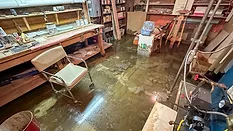
How to Remove Baseboard and Trim
Newer technicians may need to lean on seasoned veterans to master techniques.

Image courtesy of: spyarm (iStock / Getty Images Plus)
Coverage of the people, tools and techniques related to water damage restoration. Insights on responding to leaks, floods, sewage backups, storm damage and more.
Newer technicians may need to lean on seasoned veterans to master techniques.
Copyright ©2026. All Rights Reserved BNP Media.
Design, CMS, Hosting & Web Development :: ePublishing